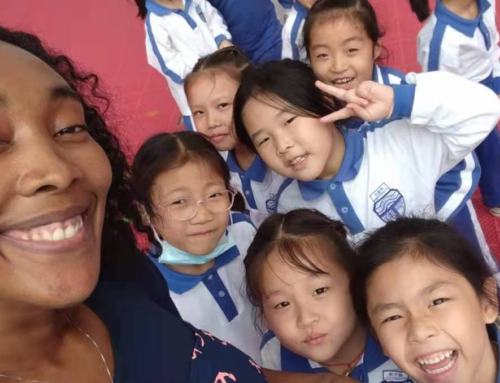Total Physical Response (TPR) (James Asher)
 This was developed by Asher who observed children learning their first language from their parents. He noticed some general patterns; children learnt language often as a result of listening which is reinforced by associating an action to a command or instruction that is heard and also language learning is best done when there is little stress especially for younger learners who can acquire language better in more ‘natural’ environments.
This was developed by Asher who observed children learning their first language from their parents. He noticed some general patterns; children learnt language often as a result of listening which is reinforced by associating an action to a command or instruction that is heard and also language learning is best done when there is little stress especially for younger learners who can acquire language better in more ‘natural’ environments.
Students listen to a command such as “sit down” or “stand up” and then perform the action. I feel this theory or way of teaching lends itself better to younger or lower level learners who can have simple language physically modelled to them. Grammar is not explicitly taught but merely exposed to learners who can learn chunks of language but one common criticism of the approach is that it is not practical to teach to a larger class or that it is difficult to plan a lesson that will not soon get repetitive and boring. One could argue that the approach was maybe not intended to be taught to a learner whose language level is higher than a basic level and that it can also supplement instead of replace other methodologies used in the language learning classroom.
Task Based Learning (TBL) (Prabhu & Willis)
 In simple terms learners use their existing language skills to complete a non-language based task. This area has had lots of research done on it and researchers have found that learners seem to retain language better when it is used in an authentic and meaningful way to complete a task.
In simple terms learners use their existing language skills to complete a non-language based task. This area has had lots of research done on it and researchers have found that learners seem to retain language better when it is used in an authentic and meaningful way to complete a task.
For the language classroom, Jane Willis feels TBL consists of a pre task, task cycle and a language focus. For the pre task teachers provide sample language or even encourages learners to decide what language is required. What makes this more student centered is that in the task stage the learners complete the activity with the teacher merely taking on the role of observer or facilitator.
For Prabhu there are three main types of task; reasoning-gap, information-gap and opinion-gap.
 The reasoning gap requires the learners to use the language they are exposed to to solve a problem. One example could be looking at a price list and deciding what options are best suited to meeting a task or budget set by the teacher. The information gap could have learners holding different parts of an image and must verbally dictate their image to partners so that each learner finally ends up with a complete version of the image. An opinion gap is a subjective exercise with no set ‘right’ answer; instead learners participate in debates or discussions about personal preferences.
The reasoning gap requires the learners to use the language they are exposed to to solve a problem. One example could be looking at a price list and deciding what options are best suited to meeting a task or budget set by the teacher. The information gap could have learners holding different parts of an image and must verbally dictate their image to partners so that each learner finally ends up with a complete version of the image. An opinion gap is a subjective exercise with no set ‘right’ answer; instead learners participate in debates or discussions about personal preferences.
Missed part 1 of this article? Read it here.

















Leave A Comment